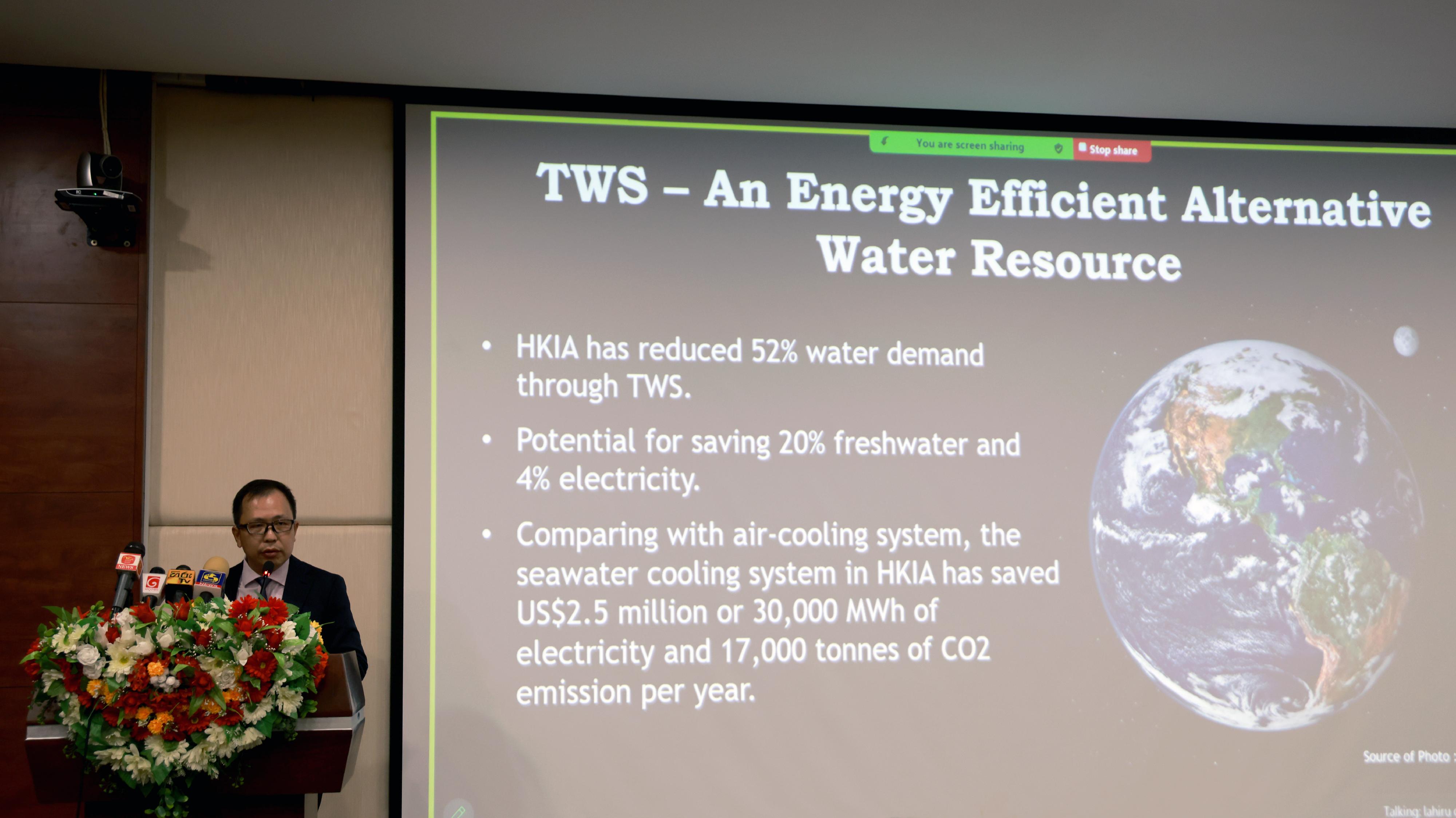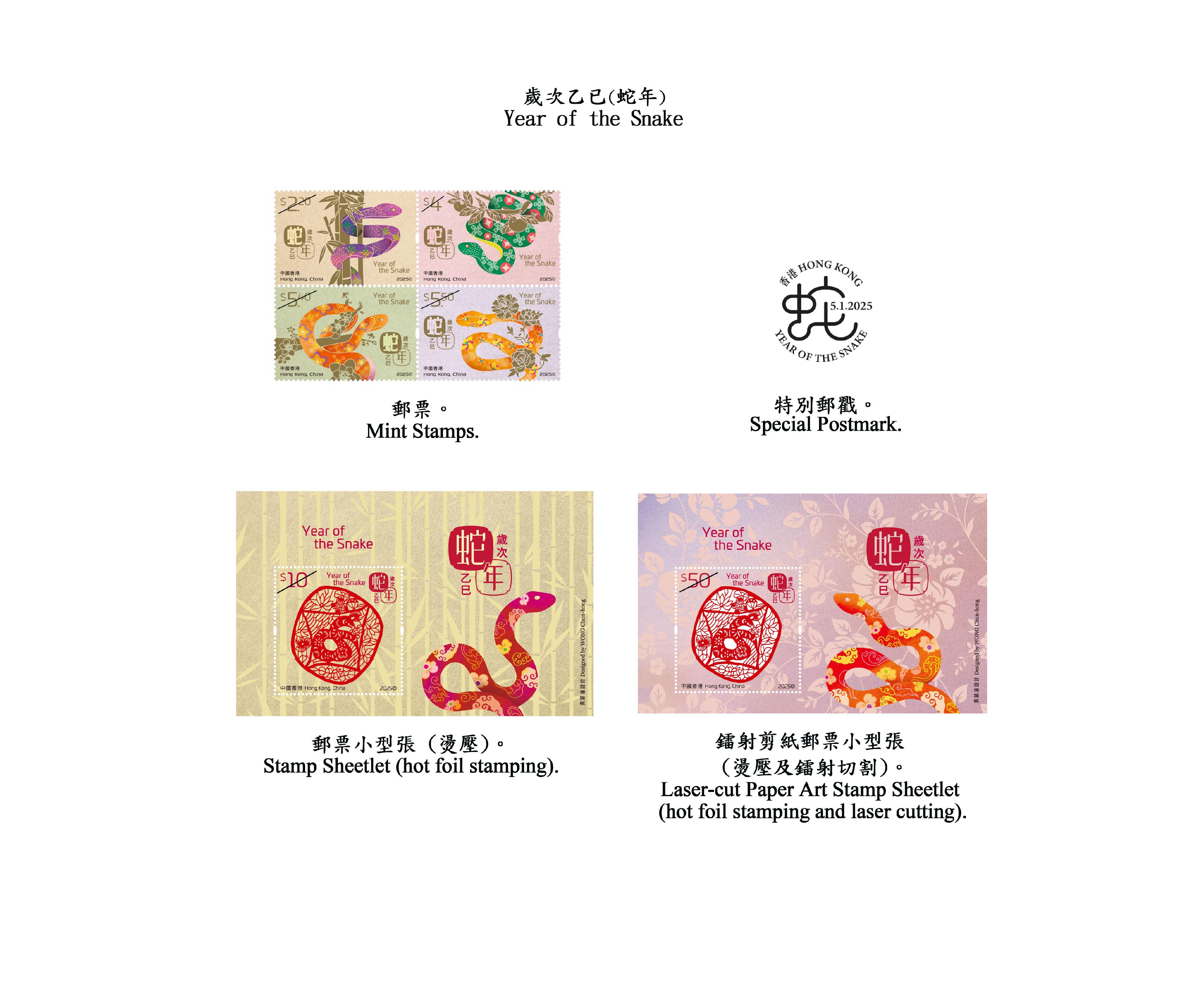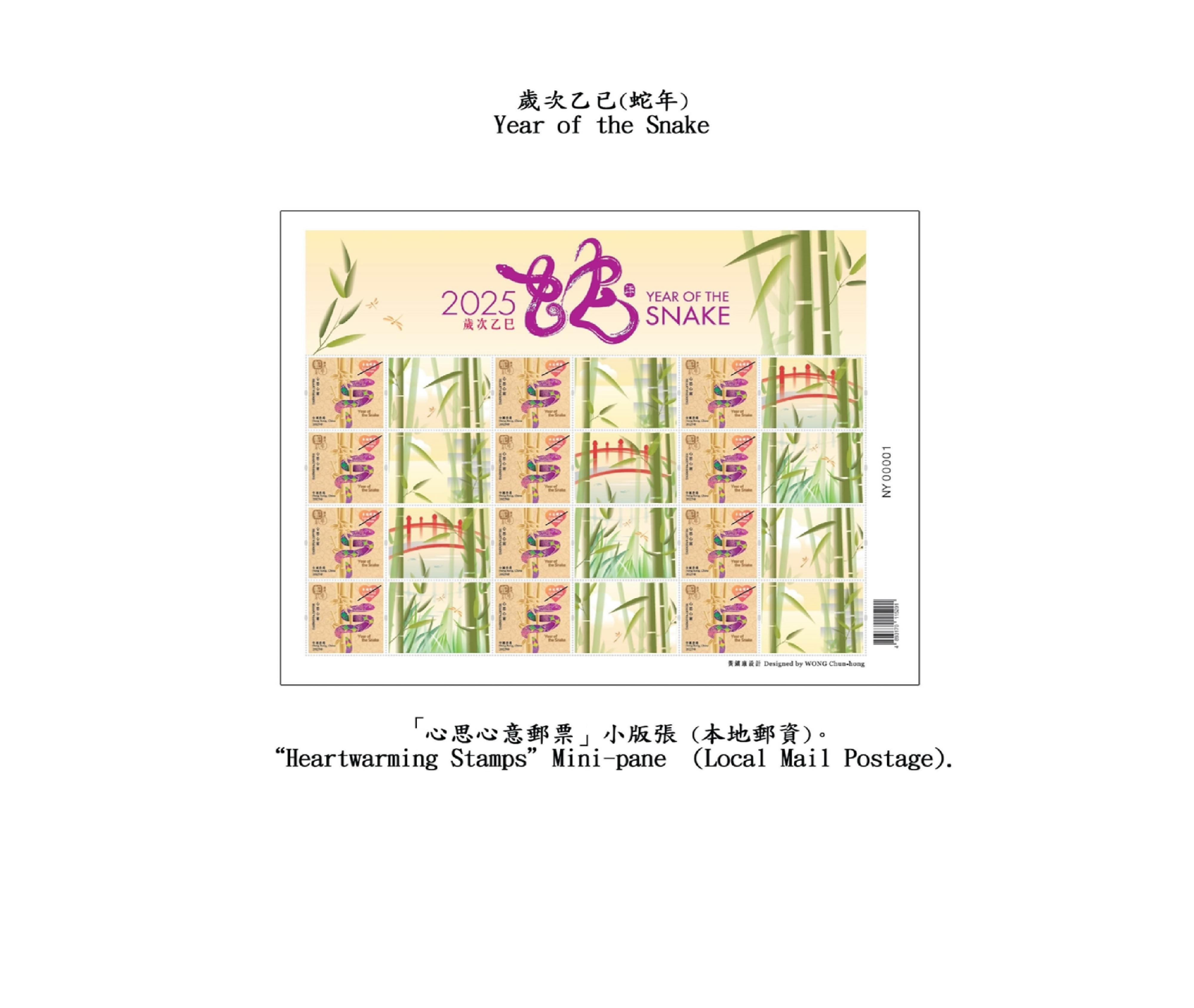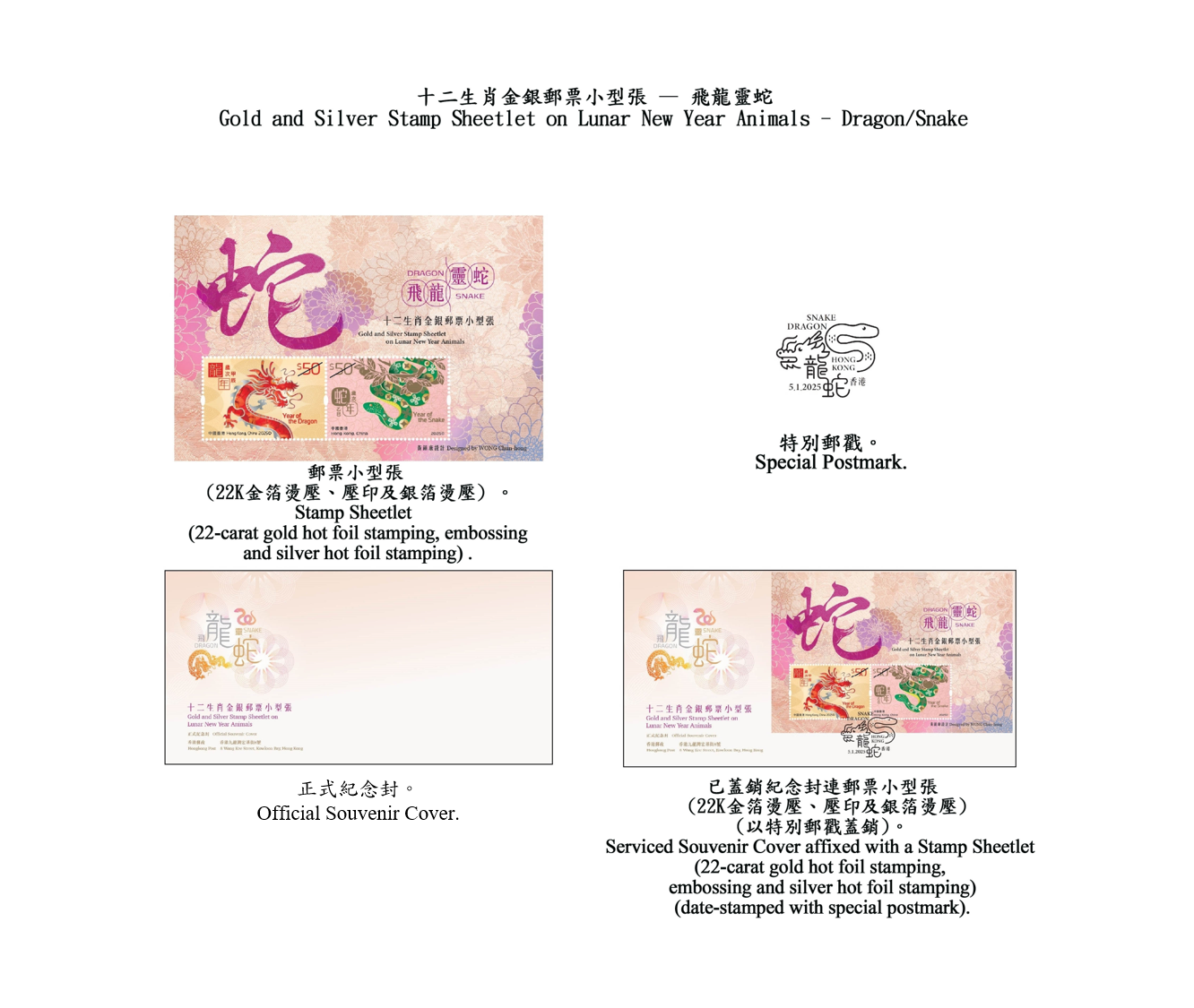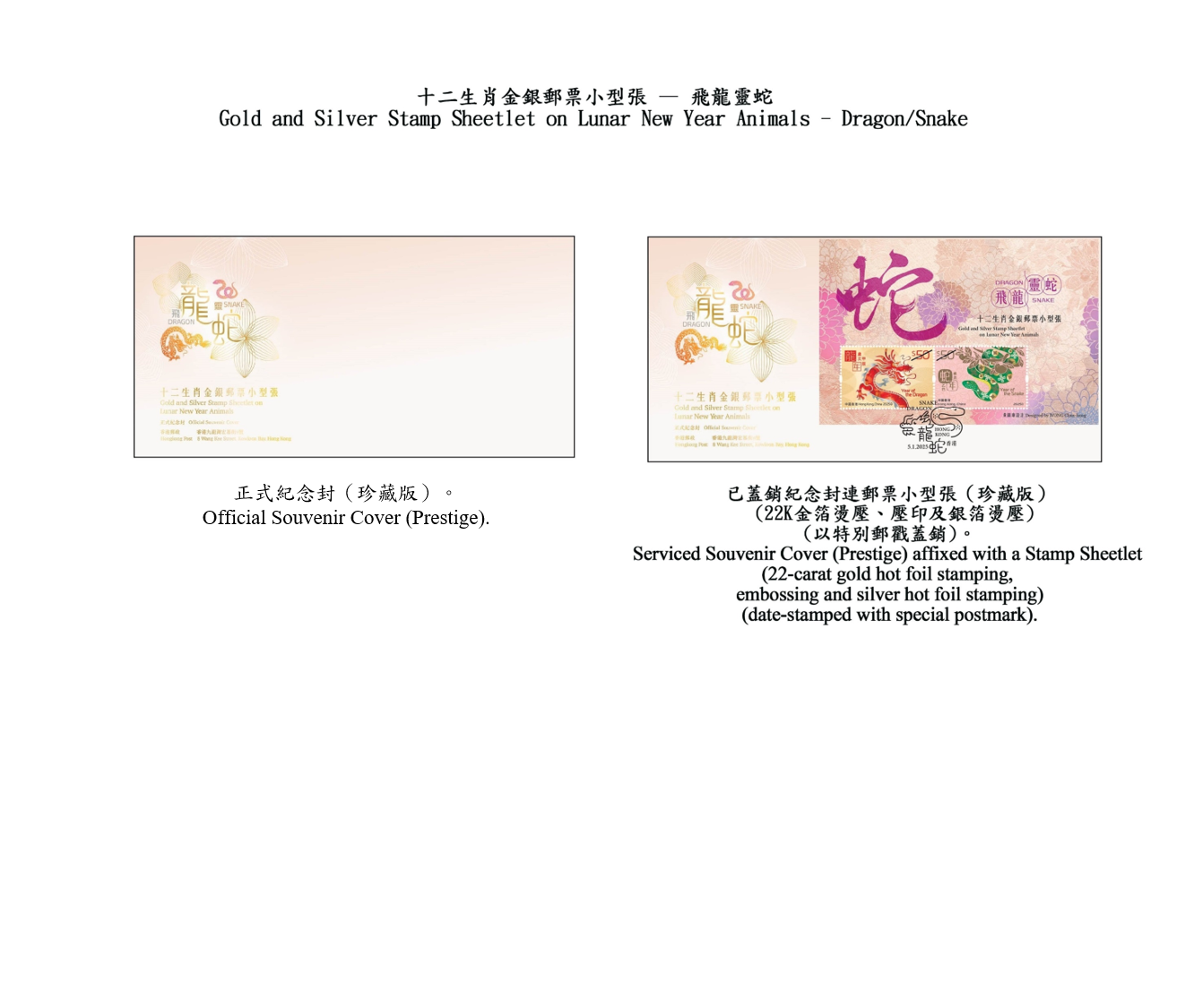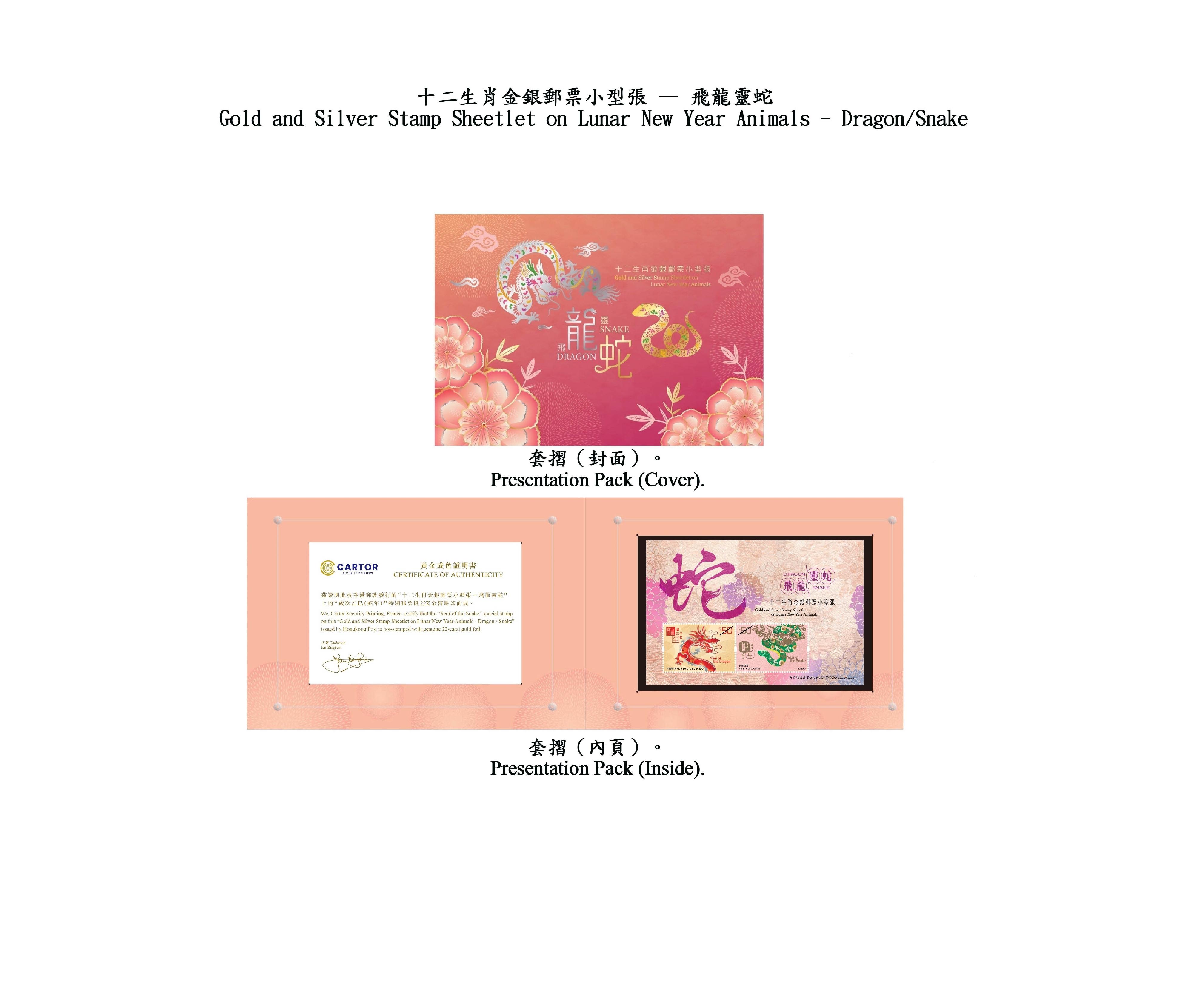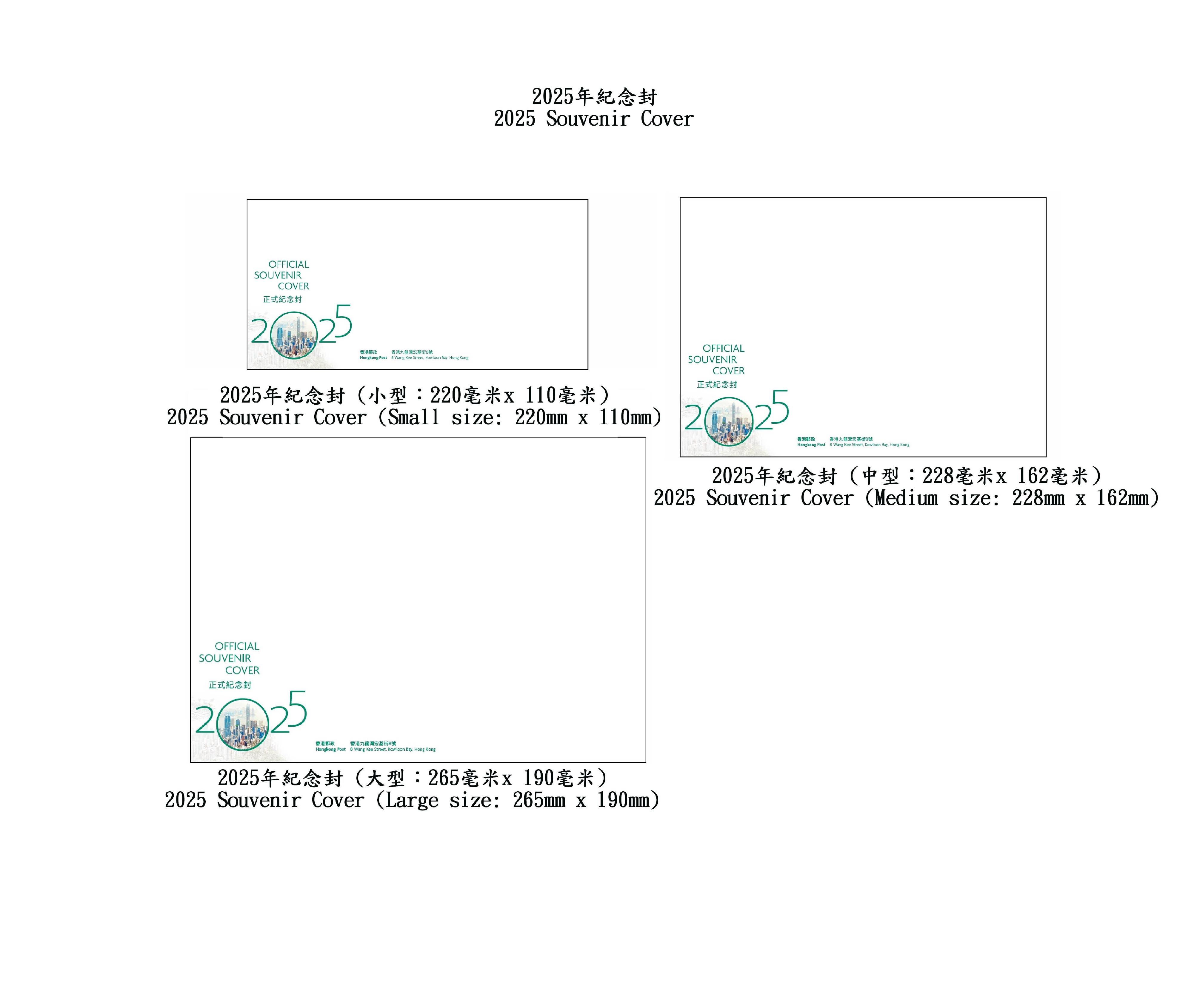​Ringing in the snake for a bright year to come, Hongkong Post announced today (December 17) that Lunar New Year special stamps and associated philatelic products on the theme of "Year of the Snake" will be released for sale on January 5, 2025 (Sunday). The "Gold and Silver Stamp Sheetlet of Lunar New Year Animals – Dragon/Snake" and "Year of the Snake" Joint Souvenir Packs will be issued on the same day, adding a festive ambience to the new year.
With a long-standing history, the 12 Chinese zodiac signs carry great significance in traditional Chinese culture. To welcome the Year of the Snake, Hongkong Post will release the second issue of the fifth Lunar New Year special stamp series. A set of four stamps, two stamp sheetlets and associated philatelic products feature various depictions of the snake adorned with traditional Lunar New Year elements. The background is set off with festive colours and light-gold plants, giving an atmosphere of rejoicing in celebration of the Year of the Snake. Set against a background of bamboo and peonies respectively, the $10 stamp sheetlet and the $50 laser-cut paper art stamp sheetlet depict a snake embellished with motifs of auspicious clouds and ruyi locks, signifying success and peace. The motif on the $50 stamp sheetlet is laser-cut with exquisite technique to create a delicate silhouette of a snake, rendering the stamp sheetlet a prestigious collectible for the Year of the Snake.
For the "Gold and Silver Stamp Sheetlet of Lunar New Year Animals – Dragon/Snake", this is the first issue in the third Lunar New Year Gold and Silver stamp issue series. This stamp sheetlet is embedded with two zodiac stamps, namely "Year of the Dragon" stamp and "Year of the Snake" stamp, each in a denomination of $50. The dragon and snake on the stamps are hot stamped with silver foil and 22-carat gold foil respectively, and accompanied by a certificate of authenticity. The snake is specially produced with an embossing technique, creating a lifelike and dynamic effect.
In addition, China Post, Hongkong Post and Macao Post and Telecommunications will jointly present "Year of the Snake" Joint Souvenir Packs on the same day. The Joint Souvenir Packs contain the souvenir sheet jointly issued by the three postal administrations, demonstrating that the three places share the same roots and cultural lineage.
Official first day covers for "Year of the Snake" and official souvenir covers for the "Gold and Silver Stamp Sheetlet of Lunar New Year Animals – Dragon/Snake" will be on sale at all post offices and on Hongkong Post's online shopping mall ShopThruPost (shopthrupost.hongkongpost.hk) from tomorrow (December 18). Prestige versions of the aforesaid covers, red packets and the newly designed 2025 Souvenir Cover will also be available at all philatelic offices and ShopThruPost on the same day.
This set of special stamps and associated philatelic products will be on sale at all 37 philatelic offices and ShopThruPost from January 5, 2025, and will also be available at other non-philatelic offices from January 6. Serviced first day covers/Lunar New Year animals souvenir covers affixed with the special stamps, prestige versions of serviced first day covers/Lunar New Year animals souvenir covers affixed with the special stamps, postage prepaid Lunar New Year greeting cards (air mail), "Heartwarming Stamps" mini-panes (local/air mail), Joint Souvenir Packs and prestige versions of Joint Souvenir Packs will be available at philatelic offices only.
Special sales arrangements will be made on the stamp issue date, January 5, 2025. Thirty-two philatelic offices will be open from 9.30am to 1pm on that day, while the other five philatelic offices including the General Post Office, Tsim Sha Tsui Post Office, Tsuen Wan Post Office, Sha Tin Central Post Office and Tuen Mun Central Post Office will be open from 9.30am to 5pm.
​A hand-back date-stamping service will be provided on January 5, 2025, at all philatelic offices for official first day covers/souvenir covers/privately made covers bearing the first day of issue indication and a local address.
Information about this set of special stamps and associated philatelic products is available on the Hongkong Post Stamps website (stamps.hongkongpost.hk).


